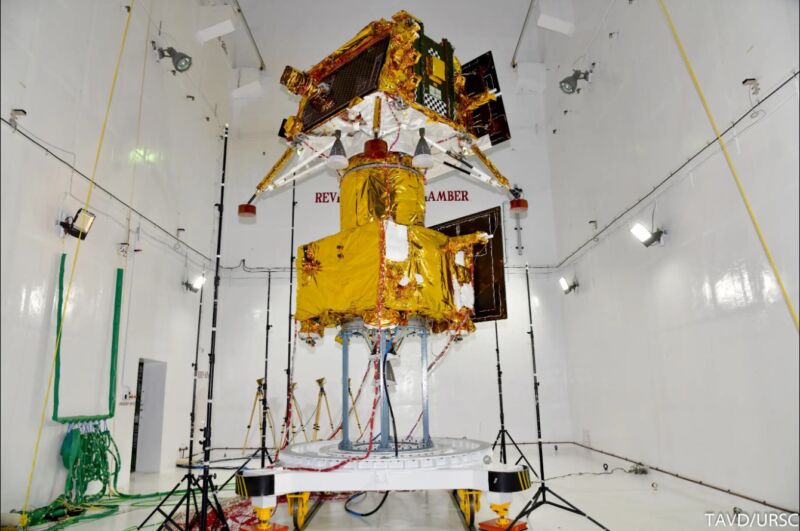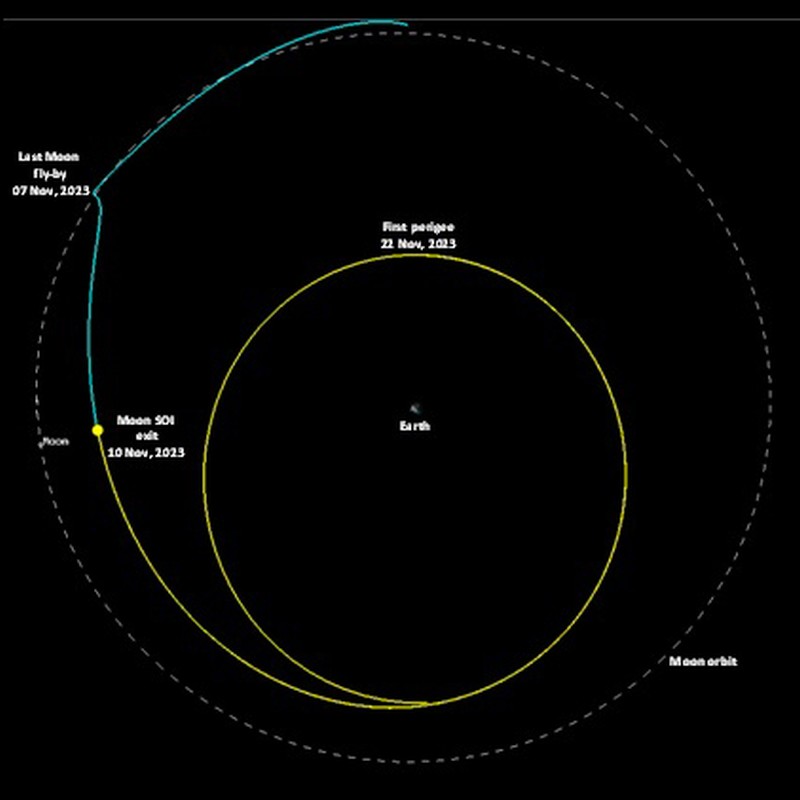
A little more than three months ago the Indian space agency, ISRO, achieved a major success by putting its Vikram lander safely down on the surface of the Moon. In doing so India became the fourth country to achieve a soft landing on the Moon, and this further ignited the country's interest in space exploration.
But it turns out that is not the end of the story for the Chandrayaan 3 mission. In a surprise announcement made Monday, ISRO announced that it has successfully returned the propulsion module used by the spacecraft into a high orbit around Earth. This experimental phase of the mission, the agency said in a statement, tested key capabilities needed for future lunar missions, including the potential for returning lunar rocks to Earth.
A capable module
The primary task of the propulsion module was to deliver the Vikram 3 lander into a low-lunar orbit, 100 km above the surface of the Moon. After doing this in August, the propulsion module moved to an orbit around the Moon at an altitude of 150 km. There, its remaining operational goal was to support a science experiment, known as SHAPE, to observe the Earth.
However, after a month of flying in this orbit, Indian mission operators found that the spacecraft still had a reserve of more than 100 kg of propellant. The propulsion module, which is powered by monomethylhydrazine and a nitric oxide-based oxidizer, had launched with 1,696 kg of fuel and oxidizer. This excess of propellant raised the possibility of additional maneuvers.
The engineers knew that the SHAPE mission could carry out its observations of Earth's atmosphere from a different orbit. By looking at Earth from a distance, this innovative science experiment seeks to set a benchmark for what to expect from the atmospheric signatures of exoplanets that may be capable of supporting life. So, the Indian engineers reasoned, it would be good to demonstrate the capability of their spacecraft to return to Earth orbit.
"It was decided to use the available fuel in the PM to derive additional information for future lunar missions and demonstrate the mission operation strategies for a sample return mission," the Indian space agency said Monday.
Back to Earth orbit
On October 9 the propulsion module raised its lunar orbit from 150 km to 5,112 km, and four days later it burned its engine again to begin exiting lunar orbit. In its new orbit around Earth, the propulsion module reached its first perigee on November 22, coming to within 154,000 km of the planet's surface. Over time the orbit will vary, with a minimum perigee of 115,000 km. Such a high orbit will not threaten any operational satellites around Earth, ISRO said. It is also a fine orbit from which the SHAPE payload can continue to carry out its observations of Earth's atmosphere.

So what's next?
India has not declared its future plans for the Moon beyond the Lunar Polar Exploration Mission, a joint operation with the Japanese space agency, JAXA. That mission is planned to carry a lunar lander and rover to the south pole of the Moon later this decade, but no earlier than 2026.
However, a lunar sample return mission would seem a good bet for the future. NASA, with the help of its astronauts, returned about 800 pounds of rocks during the Apollo missions. In the 1970s, the Soviet Union completed three robotic sample return missions, and China's Chang’e 5 lunar lander brought back samples three years ago.
Given the demise of the Soviet Union and Russia's lack of successful missions beyond low-Earth orbit, India now credibly has the third most advanced deep-space exploration program in the world. India placed a spacecraft into orbit around Mars in 2014, and its Vikram lander succeeded in December after Russia's Luna 25 spacecraft crashed into the Moon in August.



3175x175(CURRENT).thumb.jpg.b05acc060982b36f5891ba728e6d953c.jpg)

Recommended Comments
There are no comments to display.
Join the conversation
You can post now and register later. If you have an account, sign in now to post with your account.
Note: Your post will require moderator approval before it will be visible.